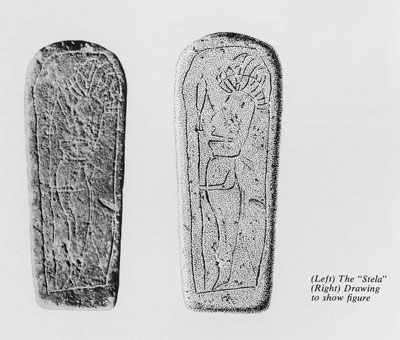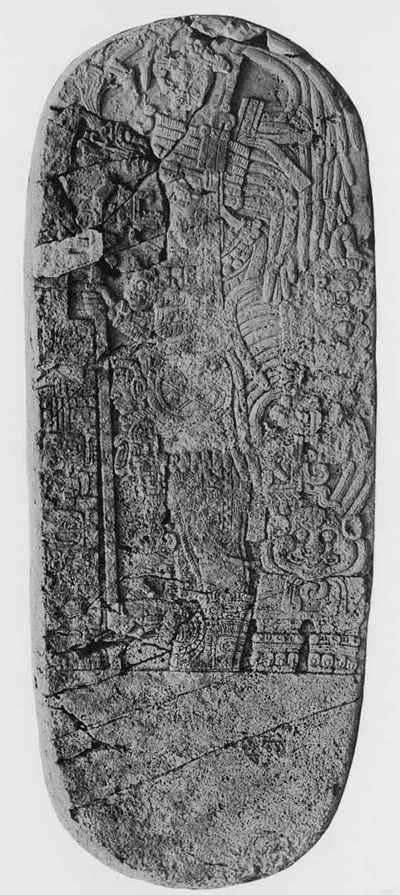
Three seasons of archaeological work at the site of Tikal, located in the rain forest of Guatemala’s department of the Peten have been devoted to the excavation of selected small mounds. These mounds, thought to be the remains of ancient Maya dwellings, are abundant in the areas peripheral to the main ceremonial center of this great Maya city. An important result of this work has been the assembling of an extensive collection of artifacts, including a large number of stone tools and pottery of a utilitarian nature, along with many figurines. However, a considerable number of unusual non-utilitarian objects are also included. One such, made of pottery, was discovered in the summer of 1960 by an associate, Karl G. Heider, in an ancient trash pile situated behind a probable Late Classic house ruin. At first, it attracted only slight interest. After the artifact had been thoroughly washed, however, the Project staff was astonished to see that it appeared to be a likeness, in miniature, of a large stone monument, a stela.

Only about three and three quarters inches long, the shape of the object is typical of a group of Late Classic monuments. The top is rounded, and the sides taper to a narrower, flat base. The only decoration is on the front, on which is incised a figure in profile which faces to the left, wears an elaborate headdress, and holds a staff. The style is similar to that of most “graffiti,” the rough incised drawings on the walls of many buildings. Aside from style, this figure shows a resemblance to the principal figure on Stela 20, a Late Classic monument at Tikal, in that it also stands in left profile holding a staff. This is the only late stela at Tikal with the principal figure portrayed as holding such a staff. Stela 20 bears the long count date of 9.16.0.0.0 (A.D. 751).
It is interesting to speculate on the significance of this artifact. It probably cannot be considered a true stela. In the first place, carved stelae normally bear a hieroglyphic inscription. We also know that Tikal stelae, in their original setting, conformed to rigid standards. They were normal associated with a building, and an observer facing the building would also face the front of the stela, which stood before it. A round altar, carved if the stela also was carved, sat in front of the monument. A cached offering was normally placed beneath the monument. It seems clear, therefore, that this small pottery object would not qualify as a true stela.
On the other hand, we cannot assume that the obvious resemblance to a stela is unintentional. The probability is that we have here either an artist’s conception of a stela, or a model of an actual stela. This latter possibility is suggested not only by the overall appearance, but also the similarity of the pose of the subject to that of the principal figure of Stela 20. The trouble with identifying it as a model of this monument, aside from stylistic considerations and details of design, is that the overall shapes differ. Stela 20 has parallel sides and a rounded base, while the sides of the supposed model taper to the flat base, an attribute of some other late stelae. The differing bases might be explained if the maker had seen Stela 20 only as it stood, with its base buried underground. Of course, it might be modeled after a stela as yet unknown.
If this is a true model, perhaps it served as a personal charm deriving special power from the stela it represented. Or, was it only a souvenir, a mere curio, or one-of-a-kind? These questions beg to be answered. Perhaps if we find more objects of this kind in the future, we may be able to answer some of them more satisfactorily.
